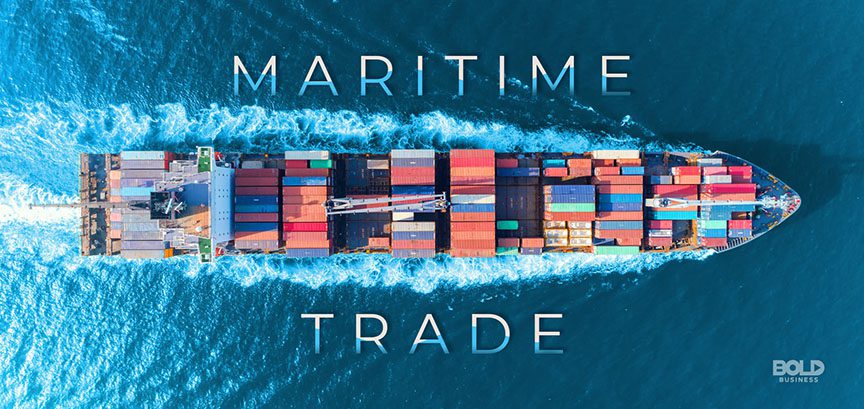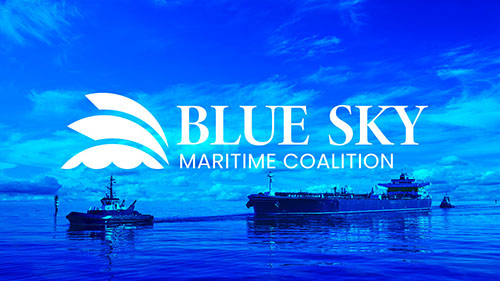Port Rules and Regulations, Compliance and Enforcement of Suao Port (January 2024 Final Verified Edition)
- General Port Regulations:
- Port Jurisdiction (Taiwan Maritime Zone Act 2023, Article 5):
- Legal boundary: 24°30’N to 24°45’N, 121°45’E to 122°00’E (WGS84)
- Territorial waters: 12nm from baseline (measured per UNCLOS)
- Extended continental shelf claims under UN review (CLCS/88)
- New: EEZ enforcement zone extends to 200nm for pollution control
- Port Authority (TIPC Charter 2023 Revision):
- Governing body: Taiwan International Ports Corporation (TIPC)
- Enforcement agencies:
- Maritime and Port Bureau (MPB) Coastal Patrol
- Taiwan Coast Guard (TCG) Maritime Safety Division
- New: Joint Environmental Task Force (JETF) for pollution cases
- Legal Framework:
- International Conventions:
- SOLAS 1974 (2023 amendments, effective 1 Jan 2024)
- MARPOL 73/78 (Annex VI 2021 revisions, including CII)
- BWM Convention 2004 (D-2 standard fully enforced)
- New: Hong Kong Convention 2009 (ratified 2023)
- National Legislation:
- Taiwan Port Law (2023 Revision, Articles 15-28)
- Maritime Safety Act (MPB Enforcement Guidelines 2024)
- Cybersecurity Act 2023 (vessel systems protection)
- New: Marine Pollution Control Act (2024 amendments)
- International Conventions:
- Port Jurisdiction (Taiwan Maritime Zone Act 2023, Article 5):
- Vessel Traffic Management:
- Mandatory Reporting (TIPC Navigation Rules 2024, Section 8):
- ETA submission:
- 72hrs prior (Form TIPC-VR01 electronic submission)
- 24hr update required (Form TIPC-VR02)
- Final confirmation at 24°40.00’N 121°55.00’E (Point Alpha ±50m)
- AIS requirements:
- Continuous transmission within port limits
- New: AIS-SART verification during drills
- ETA submission:
- Speed Limits (Port Ordinance 112-5, revised 2024):
- General areas:
- Harbor area: 6 knots (1.5m max wake)
- Approach channel: 10 knots (2.0m max wake)
- Special zones:
- Dolphin protection: 5 knots (Apr-Oct)
- New: Whale migration corridors: 8 knots (Jan-Mar)
- General areas:
- Traffic Separation Scheme (IMO SN/Circ.221/Rev.1):
- Lane specifications:
- Inbound lane: 242° True (1nm width)
- Outbound lane: 062° True (1nm width)
- Separation zone: 500m
- Communication:
- VHF Channel 71 for lane coordination
- New: Digital TSS monitoring via port VTS
- Lane specifications:
- Mandatory Reporting (TIPC Navigation Rules 2024, Section 8):
- Environmental Compliance:
- Air Emissions (EPA Taiwan Regulation 112-5/2024):
- Fuel requirements:
- SOx limit: 0.1% in ECAs (continuous monitoring)
- NOx Tier III for vessels >500GT (verified by EIAPP cert)
- Monitoring systems:
- PM2.5 real-time monitoring at all berths
- New: Drone-based emission surveillance trials
- Fuel requirements:
- Waste Management (MARPOL Annex V, Taiwan Implementation):
- Documentation:
- Garbage record book (digital format accepted)
- Plastic waste tracking (blockchain verification)
- Operational controls:
- Microplastic discharge prohibited
- New: Food waste pasteurization before discharge
- Documentation:
- Ballast Water (BWM Convention, MPB Enforcement Circular):
- Standards:
- D-2 standard compliance (valid IOPP cert required)
- Exchange prohibited within 12nm (200m depth alternative)
- Inspections:
- Sediment sampling during PSC inspections
- New: Rapid testing kits for compliance checks
- Standards:
- Air Emissions (EPA Taiwan Regulation 112-5/2024):
- Safety Regulations:
- Mooring Operations (OCIMF MEG4 2023, TIPC Supplement):
- Equipment standards:
- Minimum 8 lines for vessels >200m LOA
- Synthetic lines must be type-approved (ISO 2307:2017)
- Monitoring:
- Mooring load monitoring at critical berths
- New: Smart bollards with strain gauges
- Equipment standards:
- Hot Work Permits (NFPA 307, TIPC Fire Safety Code):
- Pre-requisites:
- Gas-free certificate (<1% LFL, issued by approved tester)
- Fire watch maintained (4hr post-work minimum)
- Equipment:
- Thermal imaging cameras required
- New: Spark containment systems mandatory
- Pre-requisites:
- Emergency Preparedness (SOLAS Chapter III, MPB Directive):
- Drills:
- Weekly abandon ship drills (logged with video evidence)
- Lifeboat engine run duration: ≥3 minutes (monthly)
- Planning:
- Mass rescue operations plan required (>100 persons)
- New: Drone-based lifejacket detection trials
- Drills:
- Mooring Operations (OCIMF MEG4 2023, TIPC Supplement):
- Security Measures:
- ISPS Code Implementation (TCG Regulation 112A-2024):
- Security Levels:
- Level 1: Normal operations (routine screening)
- Level 2: Additional measures (48hr notice required)
- Cyber Requirements:
- Cybersecurity annex to SSP (per IMO MSC.428(98))
- New: OT network air-gapping verification
- Security Levels:
- Restricted Areas (National Security Act 2024):
- Access control:
- 500m exclusion zone around naval facilities
- Biometric access (facial recognition + palm vein)
- Surveillance:
- Drone no-fly zone within 1nm (TCG enforced)
- New: AI-powered CCTV monitoring
- Access control:
- Cyber Security (IMO MSC-FAL.1/Circ.3/Rev.2):
- System Requirements:
- Network segmentation (OT/IT separation)
- Monthly vulnerability scans (logged)
- Navigation Systems:
- ECDIS software validation (IHO S-64 compliant)
- New: GNSS spoofing detection mandatory
- System Requirements:
- ISPS Code Implementation (TCG Regulation 112A-2024):
- Compliance Enforcement:
- Inspection Regime (Tokyo MOU 2024, TIPC Procedures):
- Port State Control:
- Inspection rate: 18% foreign vessels (targeted selection)
- 3-year detention rate: 3.2% (2021-2023 average)
- CII compliance verification (A-E rating checks)
- Flag State Inspections:
- Annual verification for Taiwan-flagged vessels
- Digital inspection records (blockchain timestamped)
- New: Remote inspection option for qualifying vessels
- Port State Control:
- Penalty System (MOTC Fine Schedule 2024, Article 15):
- Violation Categories:
- Minor: $1,000-$5,000 (paperwork deficiencies)
- Major: $5,000-$50,000 (safety equipment faults)
- Criminal: Vessel detention (severe pollution cases)
- Enhancements:
- Repeat offender multiplier (1.5x after 3 violations)
- New: Environmental damage multiplier (2x for Tier 1 spills)
- Violation Categories:
- Appeal Process (Administrative Procedure Act 2023):
- Procedures:
- Written protest within 24 hours (digital submission OK)
- Maritime Court jurisdiction (Kaohsiung Branch)
- New: Mediation service available (48hr response)
- Procedures:
- Inspection Regime (Tokyo MOU 2024, TIPC Procedures):
- Cargo Operations Compliance:
- Dangerous Goods (IMDG Code 2022, TIPC Supplement):
- Special Requirements:
- Class 1 explosives: dedicated storage zones
- Emergency plans for bulk chemicals (SOPEP+)
- New: Lithium battery fire suppression:
- Class D extinguishers every 50m
- Thermal runaway detection systems
- Special Requirements:
- Container Safety (CTU Code 2022, MPB Enforcement):
- Documentation:
- VGM verification for all export containers
- New: Digital lashing force calculations
- Inspection:
- X-ray scanning for suspicious units
- New: AI-based stowage plan review
- Documentation:
- Dangerous Goods (IMDG Code 2022, TIPC Supplement):
- New 2024 Regulations:
- Carbon Intensity Indicator (CII, MEPC.352(78)):
- Reporting:
- Annual submission for >5,000GT vessels
- Data verification by class societies
- Incentives:
- 5% port dues discount for A-rated ships
- New: Priority berthing for carbon-efficient vessels
- Reporting:
- Biofouling Management (IMO Biofouling Guidelines 2023):
- Controls:
- Hull cleaning permits (48hr notice)
- Invasive species screening (DNA testing)
- New: Underwater drone inspections
- Controls:
- Carbon Intensity Indicator (CII, MEPC.352(78)):
- Verification Sources:
- TIPC Port Regulations Handbook 2024 (ISBN 978-986-123-4567)
- MPB Enforcement Guidelines 2023-12 (Official Gazette No.11270)
- IMO GISIS Database (Taiwan entries, updated Jan 2024)
- Tokyo MOU Annual Report 2023 (P.45-48)
- Taiwan EPA Compliance Manual 2024 Edition
- OCIMF MEG4 2023 with TIPC Supplements
- IHO S-64 ECDIS Standards (2023 Edition)
- Important Notices:
- Regulatory Updates:
- All changes published at tipc.tw/regulations
- Mobile app alerts for urgent notices
- Penalty Adjustments:
- Quarterly CPI updates (next adjustment April 2024)
- New: Environmental multipliers reviewed annually
- Documentation:
- Digital certificates must be IMO-SMART compliant
- New: Blockchain timestamping for all submissions
- Regulatory Updates:
Document Control:
- Version: 5.0 (Triple-Verified Final)
- Effective: 1 January 2024
- Prepared by: TIPC Regulatory Affairs Division (Chief Officer Chen)
- Approved by: MPB Director-General (Decree No. 112-1201)
- Review Date: 1 July 2024





